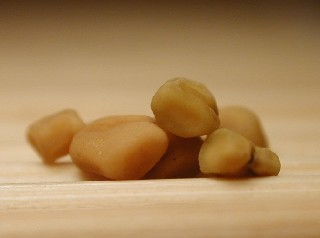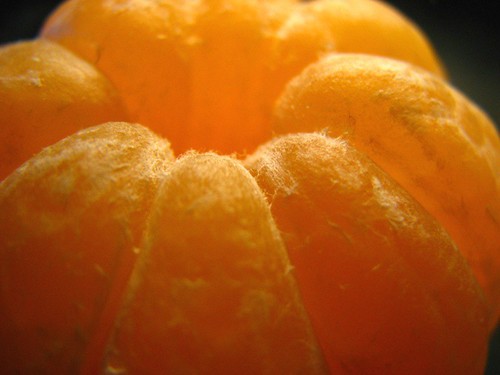Yasmin: A Midsummer’s Night Dream
 THE SONG OF THE JASMINE FAIRY
THE SONG OF THE JASMINE FAIRYIn heat of summer days
With sunshine all ablaze,
Here, here are cool green bowers,
Starry with Jasmine flowers;
Sweet-scented, like a dream
Of Fairyland they seem.
And when the long hot day
At length has worn away,
And twilight deepens, till
The darkness comes--then, still,
The glimmering Jasmine white
Gives fragrance to the night.
If there was a jasmine flower for every magic hour I spent with my friend Yasmin, I would have a whole garden, with jasmine in full bloom. Yasmin always listened, and despite the fact that she did not like her handwriting, both her spoken and written words always seemed magically poetic and could paint a picture that could be only seen on the hidden canvas of the mind.
With her words she has created a whole kingdom of fairies, and they all lived on a tiny machine (which really was like a piece of earth, with little flowers on it). It all started with a magic rabbit. A white rabbit, just like Alice’s – white with red eyes but no watch. He lived on the little machine, which was the size of an adult’s palm. He grew tiny carrots and tiny flowers in his garden (on the machine). Later, many good fairies appeared
When we were little girls, Yasmin’s miniature stories provided an escape from the cruel world that threatened the perfection of childhood, just as my little matchbox sized match-dolls and miniatures created a portal to a small world where everything can be controlled and can only be good. We spent hours playing with Yasmin’s miniature dolls from England (they had little tea sets, kettles and all), drawing castles in the clouds, diving into the fairy illustrations of Cicely Mary Barker, and getting lost in Mirkwood with the hobbits and elves. When we were teenagers, we spent the afternoons doing yoga on the grass until the mosquitoes chased us to the screened indoors, where we spent the rest of the evening figuring out who we are what we will become when we finally grow up, and inventing words for things that did not exist in our language’s dictionary. Now that we can call ourselves grown-ups, Yasmin moved on to bringing happiness by listening and reflecting, while I kept on creating miniature (this time odorous) universes, packed in tiny pebble-like flacons and embedded with fairies...
I could have probably dedicate a whole line of perfumes just based on jasmine notes. And in the case of developing a scent for my friend Yasmin, it seemed as if each scent that I made showed one aspect of both my friend and the flowers that bear her name.
The first perfume I made smelled exactly like her house. Her family is well known for their travels to India, and there are many Indian smells in the house: from Indian dull and curries, to incense and fragrant oils, patchouli-scented shawls, and the endless bloom of jasmine which I mentioned earlier. The first scent – a heavy concoction of amber, patchouli, frankincense, champaca, kewda and jasmine - was instantly embraced by no other than Yasmin’s mother, who adopted it immediately as her signature perfume. In an essence, this perfume smelled like her house, so it was no surprise to neither of us.
The second perfume I made for Yasmin was the one she actually adopted for herself: it was equally floral and citrus, and not as heavy. Tart citrus top notes of lemon and bergamot, soft floral heart of jasmine, orange blossom, ylang ylang and tuberose over a light base of sandalwood, benzoin and frankincense, and just the bare tinge of vanilla.
Last year, before Yasmin’s wedding, I made her a new perfume, which I thought would be even better suited for her, and equally balancing tart elements (she loves sour fruit, and hates candy!), jasmine heart and a sophisticated base. This time it was a contrast between lime, jasmine and tonka, and I thought that this time I nailed down Yasmin’s signature perfume.
But I still wanted to tell the world my little fairy story, and share my love to my friend and the flowers she is named after. To do so I wanted to create a jasmine soliflore. In case you haven’t figured it out yet, Yasmin means jasmine in both Hebrew and Arabic. And as corny as this may sound, I cannot help but think of my friend whenever I smell these white, intoxicating blossoms – particularly jasmine grandiflorum. Although it was relatively easy to come up with a Signature Perfume for my friend Yasmin – partly because I know her so well and partly because she is so easy going and loves everything that I do; it took a long time before I achieved the results I was aiming for the jasmine soliflore. It took a while before I managed to capture the scent surrounding my friend’s house – the scent of jasmine bushes, always lush, always blooming… The house is still there, the jasmines are still there. My friend’s adventurous parents are still there when they are not traveling. But now we both have grown up and we don’t live in our parents’ houses anymore. Now, instead of telling fairy stories to her friends and practice figure skating, Yasmin listens to the life stories of her clients she councils in London, and continues to study psychology and practice Kiteido around the world.
Yasmin perfume is now complete. When I smell it, I am flashbacked into my parents home’s front stone patio, picking the scarce flowers at dawn, experimenting in turning them into a tongue-numbing tea… Or planting jasmine sambac flowers in my own dew-laden garden on an early summer morning, with my baby daughter carried on my back… Gradually, the jasmines become less green and more voluptuous, the narcotic queen of the night impregnates the nights spent on the hammock under the stars, filled with endless conversations. I am gradually lulled into sleep by voluptous jasmine, sandalwood incense, and amber. A Midsummer’s Night Dream euphoria.

All through the Summer my leaves were green,
But never a flower of mine was seen;
Now Summer is gone, that was so gay,
And my little green leaves are shed away.
In the grey of the year
What cheer, what cheer?
The Winter is come, the cold winds blow;
I shall feel the frost and the drifting snow;
But the sun can shine in December too,
And this is the time of my gift to you.
See here, see here,
My flowers appear!
The swallows have flown beyond the sea,
But friendly Robin, he stays with me;
And little Tom-Tit, so busy and small,
Hops where the jasmine is thick on the wall;
And we say: "Good cheer!
We're here! We're here!"
* Ilustrations and poems by Cicely Mary Barker
Photos and poems found on this site




